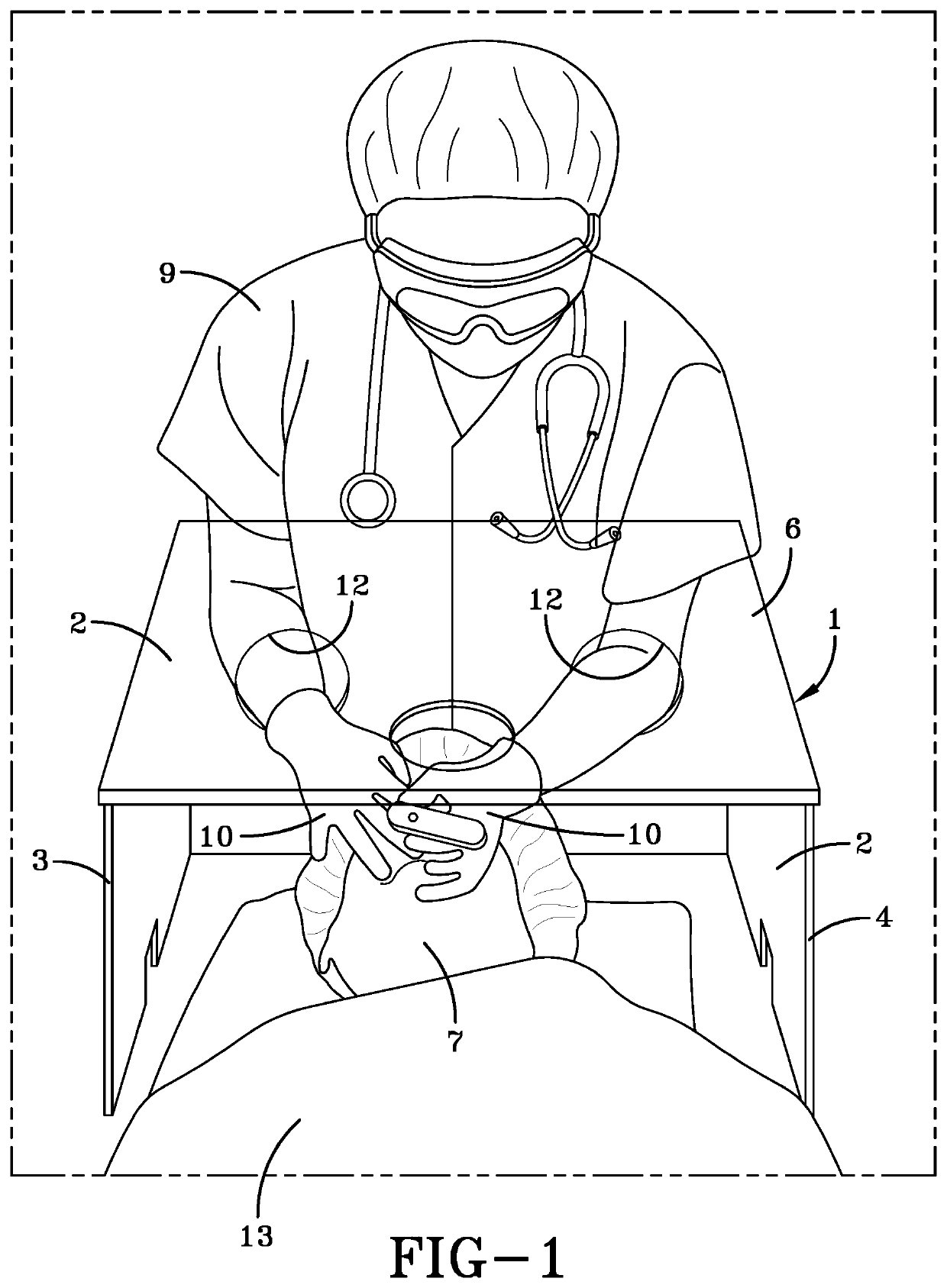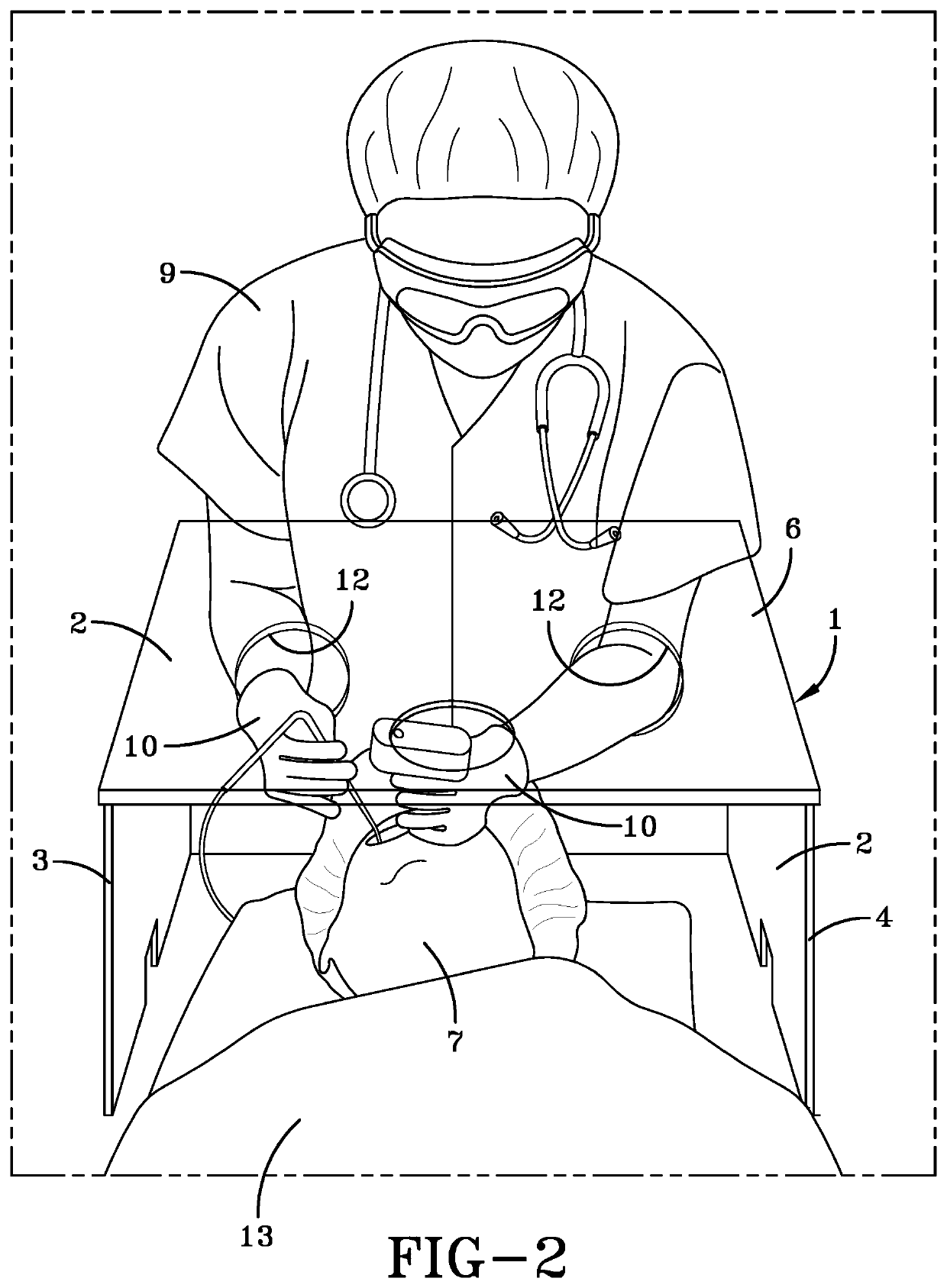Pathogen containment device
- Summary
- Abstract
- Description
- Claims
- Application Information
AI Technical Summary
Benefits of technology
Problems solved by technology
Method used
Image
Examples
Embodiment Construction
[0061]FIG. 1 and FIG. 2 are a perspective view taken from the back side of the pathogen containment device 1 of this invention. As can be seen, the pathogen containment chamber 2 is comprised of a left side wall 3, and right side wall 4, a back wall 5, and a top 6 with two access ports 12 which are adapted for allowing the hands 10 of a health care professional 9 access into the pathogen containment chamber 2. As can be seen, these access ports 12 are sufficient in size to allow the hands 10 of a healthcare professional 9 access therethrough and also are of sufficient size to permit the degree of movement necessary to carry out the required medical procedure with needed equipment, such as a laryngoscope 14. Typically, the access ports 12 are essentially circular and have a diameter which is within the range of about 4 inches to about 6 inches and normally have a diameter which is within the range of about 4.5 inches to about 5.5 inches.
[0062]FIG. 3 illustrates the hands 10 of a heal...
PUM
 Login to View More
Login to View More Abstract
Description
Claims
Application Information
 Login to View More
Login to View More - R&D
- Intellectual Property
- Life Sciences
- Materials
- Tech Scout
- Unparalleled Data Quality
- Higher Quality Content
- 60% Fewer Hallucinations
Browse by: Latest US Patents, China's latest patents, Technical Efficacy Thesaurus, Application Domain, Technology Topic, Popular Technical Reports.
© 2025 PatSnap. All rights reserved.Legal|Privacy policy|Modern Slavery Act Transparency Statement|Sitemap|About US| Contact US: help@patsnap.com



